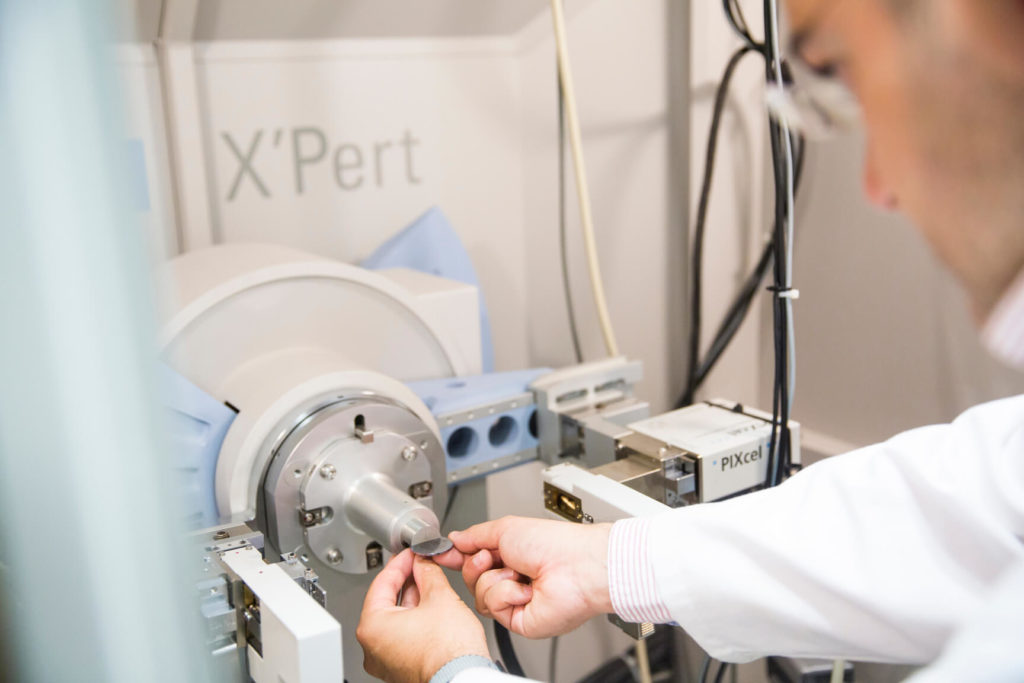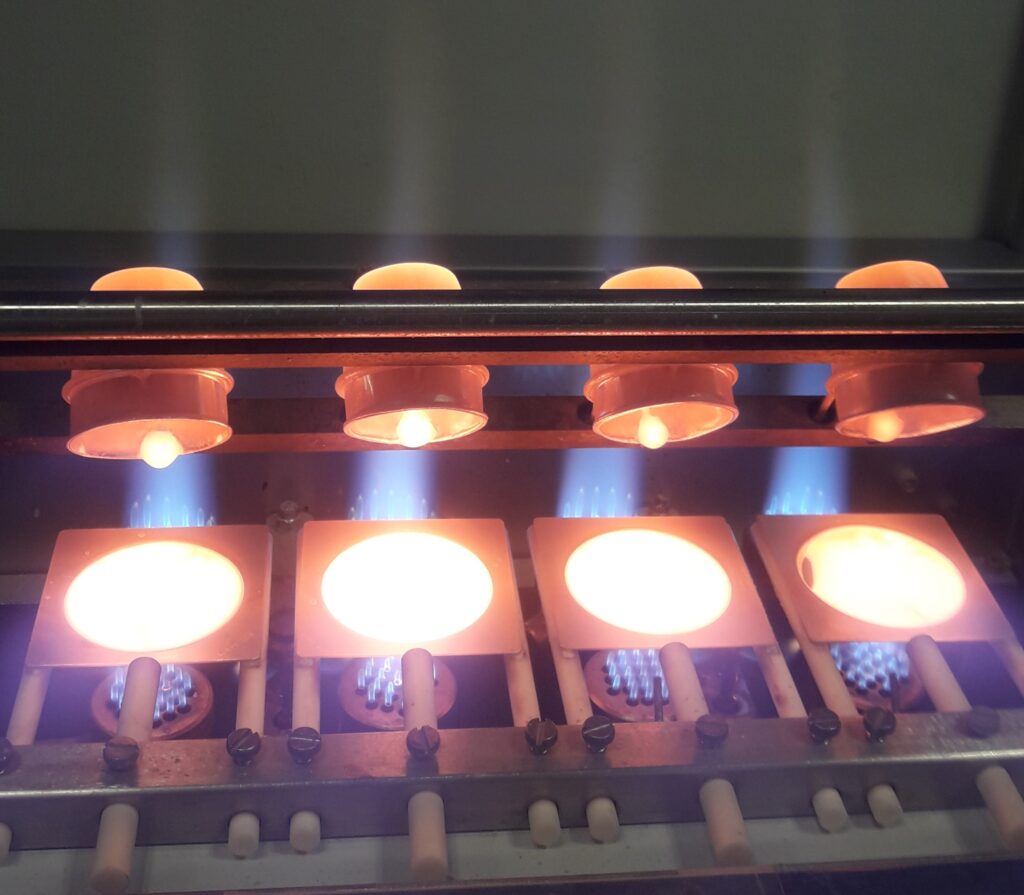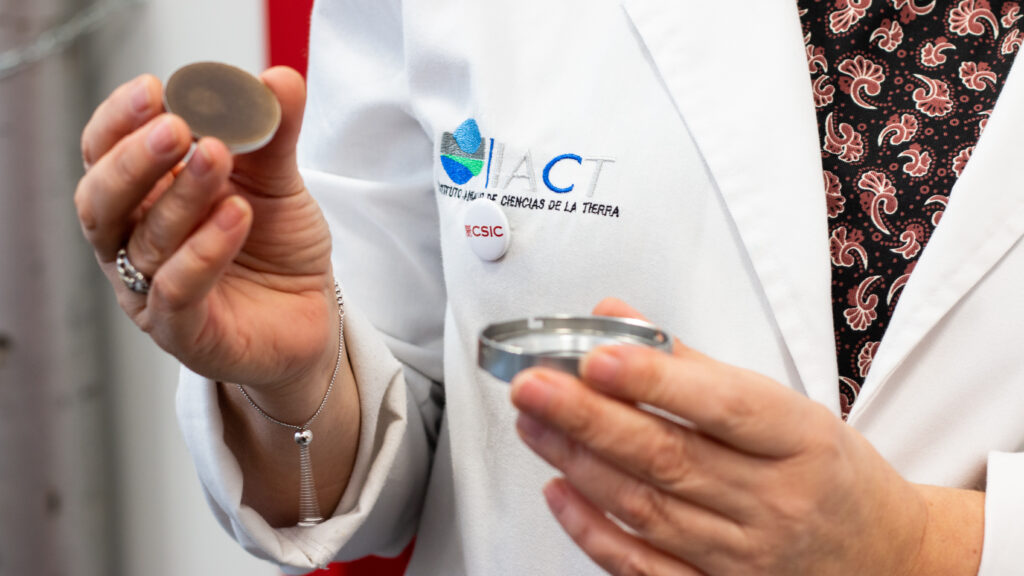
Elvira Martín Medina
elvira.martin.m@csic.7b0ksaR7Lges
958230000 Ext.436717

The Instrumental Analysis service groups several laboratories for analysis and characterization of samples. Each laboratory has specific technical personnel and scientific advisors.
The XR Difraction Unit is commited to the Quality Assurance Letter, approved on 09-10-2019.
X-ray diffraction analysis is used for mineralogical (phases identification, quantitative phase estimation) and crystallographic analysis and of any solid material. XRD is widely used in inorganic materials, superconductors. Organic compounds, cements and concrete, minerals, corrosive materials, metals and alloys, polymers, pigments, forensic samples, pharmaceutical products, ceramics, explosives, etc.

The XRD laboratory is equipped with a PANalytical X’Pert Pro diffractometer for powder samples, with Cu anode X-ray tube, programmable incident slit, spinning sample stage to reduces preferred orientation effects, and RMS X’Celerator solid state detector. The lab is focused on phase identification and quantitative estimation on power samples, using X’Pert High Score software.
Routine analyses are performed on powder samples and oriented mounts of clay minerals (including several chemical and thermal treatments).
Responsible technician: Elvira Martín Medina
Scientific advisor: F. Javier Huertas Puerta
The XR Fluorescence Unit is commited to the Quality Assurance Letter, approved on 12-10-2018.
The laboratory is equipped with a wavelength dispersive X-ray fluorescence spectrometer, BRUKER S4 Pioneer, with a maximum power of 4 kW. The spectrometer has an Rh anode X-ray tube (60 kV, 150 mA); three analyzer crystals (OVO-55, LiF 200 and PET); two collimators, 0.23° and 0.46°; Pb, Cu, and Al beam filters; and a flow proportional counter for light element detection and a scintillation counter for heavy elements. The Integrated Analytical Intelligence (IAI) of SPECTRAplus, the analytical X-ray fluorescence (XRF) software solution for calibration, evaluation and reporting, offers easy start-up for own calibrations, providing optimized measurement parameters and allowing easy routine operation. The integrated standardless evaluation for all kind of samples like rocks, minerals, metals, hydrocarbons and all kind of industrial products allows the fast and easy determination of element concentrations from 100 % down to the ppm-level without performing a calibration.
Sample preparation equipment include:
Routine analyses are performed on fussed beds and pressed pellets.
Silicate matrixes: Analysis of major elements (SiO2, TiO2, Al2O3, Fe2O3T, MnO, MgO, CaO, Na2O, K2O, P2O5), LOI and some elements in trace amount (Zr, Sr, Ni, Cr). The empirical calibration is based on a set of more than 20 international geostandard samples, that include a wide range of common silicate rocks. Residual matrix effects after simple dilution in the fussed bead (1:19) are corrected by variable influence coefficients (alpha). Detection limit for the element in trace amount is in the order of 10 ppm. For major elements precision is better than 0.2-0.3 % (for Na2O, 0.5%).
Carbonate matrixes: Analysis of major elements (SiO2, TiO2, Al2O3, Fe2O3T, MnO, MgO, CaO, Na2O, K2O, P2O5) and LOI. The empirical calibration is based on a set of more than 14 certified geostandards of carbonate rocks (limestones and dolostones). Precision is better than 0.2-0.3 % (for Na2O, 0.5%).

Analysis of elements in trace amounts in silicate matrixes (V, Cr, Co, Ni, Cu, Zn, Ga, Rb, Sr, Y, Zr, Nb, Ba, Pb, Th .). The empirical calibration is based in a set of 25 international geostandards that include the most common silicate rocks. Analysis conditions are optimized to get detection limits of 2-4 ppm depending on the element (10-15 for Ba and Co). Matrix effects are corrected using an analysis of mayor elements and variable influence coefficients (alpha) derived from fundamental parameters.
Standarless or fundamental parameter analysis procedure for mayor and in trace elements. A number of peaks of elements are scanned to detect its presence and estimate its concentration. The quantitative estimation is based on fundamental parameter and no standards are used. The method is applied to unknown matrixes or those not include in our calibration procedures, to mineralized rocks, compositions out of standard calibrations, or samples inadequate to prepare fussed beads. Analytical errors are higher than errors in empirical calibration procedures.

Responsible technician: Mª Desamparados Salido Ruiz
Scientific advisor: Francisca Martínez Ruiz
The Multi-Sensor Core Loger (MSCL) has been developed by Geotek for the high-resolution, continuous and non-destructive measuremet of the physical properties of sediments and/or rock cores. The MSCL can measure full round or half-cores with a máximum length of 1,5 m and 50 to 150 mm in diameter. Cores can be of soft sediment or consolidated rock.

The following parameters can be obtained:
Through data processing of the measured data one can also obtain:
Responsible technician: Carlota Escutia Dotti
A HORIBA EMIA-920V2 C/S analyser provides high performance analyses of C and S. The is the most accurate technique for elemental C and S detection, compared with other techniques as e.g. XRF. It allows simultaneous measurement of elemental C and S, from trace amounts to % (m/m) order, for research or routine applications in solid inorganic materials.

Application fields include geochemistry, mining, metallurgy, environment and heritage (building materials and ceramics). C and S are carbon and sulfur extracted during combustion in a programmable High Frequency furnace, and are detected as gaseous moieties using infrared spectroscopy. Reference standard samples are used to calibrate quantification procedures. Appropriate heat-control in accordance with the analysis objective enables high-precision analysis for all types of samples. Real-time simultaneous detection of CO/CO2/SO2 without an oxidizing (CO→CO2) or SO3 trapping reagents.
Scientific advisor: Carlos Garrido Marín

elvira.martin.m@csic.7b0ksaR7Lges
958230000 Ext.436717
m.s.r@u36ayQcsic.es
958230000 Ext.436720/436719
| FRX | AGE/OPI/Univ. | External |
Fussed beads,analysis of major elements |
55,41€ | 60,68€ |
Pressed pellets,Analysis of elements in trace |
48,90€ | 53,55€ |
Pressed pellets ” Standarless “
|
48,90€ | 53,55€ |